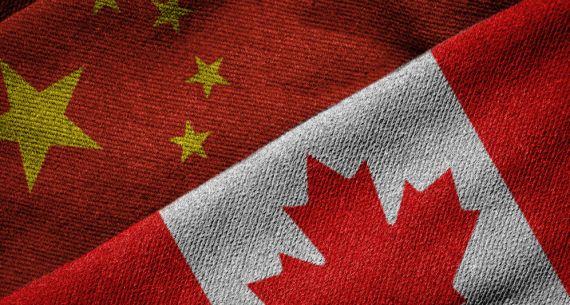Introduction
For Canadian entrepreneurs seeking new opportunities, Asia is full of markets with great promise. They look to Japan, China, South Korea, India, and Taiwan, knowing that real business growth will involve crossing the Pacific. Yet the complexities of Asian culture, economic infrastructure, politics, and trade logistics can be overwhelming.
If new entrepreneurs can learn from experienced Canadian ventures that already do business in Asia, they are much more likely to be successful in their own overseas endeavours. Bridging the Gap: Canadian Entrepreneurs Engaging with Asia bridges the knowledge gap between Asia-seasoned and Asia-curious entrepreneurs by providing practical, specific, and insightful advice from nine Vancouver-based leaders whose ventures are active in Asian markets. Three of these leaders are also experts in essential areas of interest for entrepreneurs: branding/marketing, intellectual property, and social compliance.
Canadian entrepreneurs must flesh out their understanding of the culture, government, and business policies in different Asian countries to figure out how their product or service will fit in a particular Asian market. Canadian ventures cannot assume that their brands will translate seamlessly into Asian markets. Our project experts provide suggestions on brand issues entrepreneurs should consider before they make the move overseas.
Intellectual property should also be on the radar of Canadian entrepreneurs as they consider expanding their ventures into Asia. Our experts offer advice on a few steps and lessons learned on how to protect their brands and prevent companies already established in Asia from copying their products.
Once Canadian entrepreneurs are committed to selling in Asia, they might be looking to form partnerships with locals or to establish factories in certain Asian countries. Our experts raise ideas for meeting the ethical, legal, and environmental standards they require.
Many Canadian tech startups dream of expanding into a huge Asia market, but the challenges are real. Three of our project experts are from the tech sector, an area of opportunity with strong appeal to new entrepreneurs. They share their rich experiences doing business in Asia and what it took for them to expand a tech business into Asia.
Another three experts work in the creative industries, which in Canada are often built around artisanal products. The 'art' of what these companies do comes first, but their products also need to be appealing to Asian consumers and a good market fit. Likewise, their products should be unique to the market and merit braving inevitable export-import hassles. These entrepreneurs must also consider the integrity of their artisanal approach if they bring on others to help them in production.
Creator entrepreneurs often get their first exposure to Asian markets through tourists who discover and buy their work in Canada. Research from organizations like Destination BC can offer initial insights into which local products appeal to Asia Pacific visitors.
Advice from our nine Asia entrepreneurs is followed by four insightful case studies featuring some up-and-coming entrepreneurs in the tech and creative industries who are launching their early forays into Asia. Scroll down to see what inspires them about Asian markets, and what they're doing to get their feet wet on the other side of the Pacific.
Our Experts

Ian Bell
When it comes to matters of intellectual property (IP), Ian Bell is the man with the answers. Bell is currently the Technology Transfer Manager at the University of B.C. and former senior business development officer at Stemcell Technologies, "a Canadian biotechnology company that develops specialty cell culture media, cell isolation systems and accessory products for life science research." During his career, Bill has been deeply involved with scouting new technologies, licensing, due diligence, and IP.
In an earlier job, Bell was business development officer, Pacific region, for the Canadian Intellectual Property Office. "It was an outreach and education role," says Bell. "I was working with entrepreneurs, academic institutions, incubators, and their clients. My primary focus was the 'small' in small and medium-sized enterprises, educating inventors about their intellectual property rights – Canadian and international."
Bell has spent more than 12 years working in technology transfer, first for the University of Calgary and then with UBC, where he first worked as Technology Transfer Manager in 2006, a role to which he recently returned.
"It is never too early for Canadian entrepreneurs to be thinking about IP issues," says Bell. "Even more so if they have plans to expand their business operations to Asia. They really do have important IP decisions to make, right at the beginning. Knowing the steps that are involved and the costs up front allows entrepreneurs to craft their IP strategies."

John Gilroy
Stained glass window artists have been doing their painstaking work for centuries. John and Laura Gilroy are two internationally renowned, British-trained stained-glass artists living in Canada. The Gilroys have created and restored stained glass windows for churches, residences, and corporations around the world. "People like us don't retire," says John. "All the guys we know are in their mid-80s and still painting."
In an example of a common scenario for the Gilroys, clients from China's Hubei province first discovered the work of the Gilroys through an intermediary who lives in Vancouver. "He runs a business where he looks after the niche needs of extremely wealthy clients visiting the West Coast of Canada," John explains. "He came in to visit us and said: 'I have a client who loved the windows in the Parliament Buildings in Victoria. Can you design anything at that level?' I said: 'Of course we can do that.'"
For those particular clients, the Gilroys went on to create two 18-square-foot door windows leading into a dressing room. As part of the design, the clients wanted to include famous English literary quotes. "The windows look fantastic in the house," says John. "We heard back from the interpreter that the client was absolutely thrilled."

Roger Graham
When people talk about the high-tech sector in Canada, they are quick to mention Hootsuite, launched in 2008 by Ryan Holmes and headquartered in Vancouver. "It's the world-leading social media management solution for use by businesses all over the world," says Roger Graham, senior director, growth and marketing, Asia Pacific. "We're in over 800 of the Fortune 1,000 companies."
Graham, who has lived in Singapore for the last two years, is responsible for the company's growth and marketing in the Asia Pacific. "Hootsuite has users in every country in Asia. On the enterprise side, we have over 250 customers there. Our main markets are Singapore, Australia, Malaysia, Indonesia, the Philippines, Thailand, India, as well as Japan."

Samantha Kuchmak
When it comes to corporate social responsibility, many look to MEC as a leader. In 2017, for instance, Forbes Magazine rated MEC one of the Top Three Reputable Companies in Canada. Taking an active role in bringing MEC's values to life is Samantha Kuchmak, social compliance manager at Mountain Equipment Co-op.
"MEC is a values-driven organization," says Kuchmak. "We operate as a positive model of social, environmental, and economic responsibility, and undertake activities in support of these values, because we believe it is the right thing to do."
To ensure that MEC's values are being upheld by their suppliers and partners, Kuchmak spends a great deal of her working life travelling overseas. "Throughout the year, I travel to the countries MEC sources from around the world, including India, Thailand, Cambodia, Taiwan, China, Vietnam, and the United States."
Kuchmak has developed a keen eye for companies whose values do – or do not – align with MEC's. "Social compliance is part of MEC's evaluation of vendor quality and service capabilities," Kuchmak explains. "Part of MEC's commitment to being accountable as an ethical organization is our willingness to cease business with firms that do not meet our standards of employment practices, employee health and safety, environmental commitment, and legal compliance.
"MEC requires assurance of the fair treatment of all workers producing MEC-label products," Kuchmak adds. "Our goal is to continually help improve factory working conditions. MEC commits to working with factories that understand the importance of, and demonstrate their willingness to, comply with MEC's Code of Conduct."

Cam Landell
Cam Landell has had a busy career, serving as VP in big advertising firms like BBDO and Wasserman + Partners Advertising and with clients like Telus, Whistler Blackcomb, Chevron, and Boston Pizza. In 2011, Landell and Brian Musgrove – who had worked at Rethink Communications and McKim Advertising – decided to start their own firm: Watershed Group.
Watershed Group, Landell explains, "is a branding and integrated communications boutique agency. Our bread and butter is brand identity development and brand strategy for clients. That parlays into digital, traditional, and sales support materials – things that are core now to every brand's experience."
Landell and Musgrove quickly started racking up awards: runner-up for BC American Marketing Association Marketer of the Year, for their work with the Chartered Professional Accountants of BC; a Georgie Award for their work with Portrait Homes; and a Marketing Association of Credit Unions award for their work with North Peace Savings and Credit Union. "In all three cases, it started with really solid brand work in developing a strong and unique vision for the company. That's our passion."
Landell meets both Canadian clients who want to market to Asia and Asian entrepreneurs who want to market their products in Canada. "If you're trying to sell in both North America and Asia," Landell says, "you have to do different sets of research. You can't just plug and play. Does the identity, website, and the way its expressed and the utilization of the product work in your target country? If not, you might need to do parallel brand marketing activities."

Franck Point
If you are in search of a perfectly crisp croissant, the kind you find in Paris, you best check out one of the Faubourg Bakery & Café locations in Vancouver: Kerrisdale, Downtown, East Kent, or Park Royal. The founder and master artisan behind Faubourg is Franck Point, who immigrated to Canada from Lyon, France, and who is also the Conseiller Consulaire for France in Vancouver. "We have a very artisan way of making bread, pastries, and other sandwiches as well," he says. "Everything is done by hand, no preservatives, like old times."
Point is also deeply experienced with Asia Pacific markets, after living and working there for five years as revenue manager for 90 locations of AccorHotels across the region. "I was the one putting in place the rate strategy, making sure that we were optimizing the best rates for the best occupancy."
Entrepreneurs of all stripes have asked Point for his advice on breaking into Asian markets. Now, he is tapping into his own wisdom as he talks to potential Asia Pacific partners and considers taking his artisanal Faubourg across the Pacific. Through competitor research and interactions with enthusiastic Asian customers in Vancouver, Point has seen that "the Faubourg brand and positioning works well for Asia markets." So far, the Faubourg scoping has taken Point and wife Linda Chen Point to Taiwan, her home of birth, Korea, Hong Kong, and mainland China.

George Psiharis
One of Canada's 10 Most Admired Corporate Cultures for 2016. One of Canada's Top Small and Medium Employers for 2017. And one of Canadian Business magazine's Top Managed Companies 2018. Clio – founded by Jack Newton and Rian Gauvreau in 2008 – is earning plaudits as the company expands across the world. "Clio is the leading provider of cloud-based practice management for small to mid-size law firms," explains George Psiharis, vice-president of business operations. "We support clients from intake to invoicing and online payments."
Adds Psiharis: "Right now, we are most directly active in English-speaking markets with large concentrations of law firms, such as Hong Kong and Singapore, Australia, and New Zealand."

Estrella Shen
Estrella Shen is a serial entrepreneur and Asia Pacific consultant who has launched multiple businesses in Canada and in Asia. Her Alex Industry Corp. has been active in import and export, such as manufacturing and distributing mosaic glass tiles around the world. She has owned two coffee shops in Vancouver, three in Shanghai, and art businesses in both. "In the future," Shen says, "I'd like to build housing for seniors in China."
Given her deep pool of hands-on knowledge, Shen consults with a diverse range of Canadian companies thinking of expanding to Asia, particularly China. "I was referred to people, probably because of my business experience and my Chinese background." It can be tough for high-tech companies looking to enter China, says Shen. "Massive competition, rules, and regulations all make entering into the market very difficult," she says.
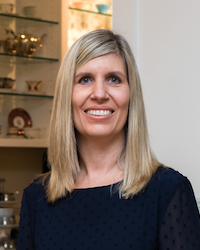
Erin Wyder
Usually people look to Asia for tea, yet customers from Asia go to great lengths to get tea from Vancouver’s Secret Garden Tea Company. “We have our own brand of tea,” says Erin Wyder, who owns the company with her sister-in-law, Kathy Wyder. “Some of the blends, we blend in-house. We are also a restaurant that specializes in afternoon tea.”
Secret Garden Tea Company’s three-tiered high tea featuring in-house sweets, savoury sandwiches, and signature scones comes with a long menu of tea choices: French Earl Grey, Creamy Earl Grey, Lavender Earl Grey, Masala Chai, Buckingham Palace, Avalon, Blue Angel, Jasmine with Flowers, and more. “We are a traditional, British-feeling location,” says Erin. “Eighty to 85 percent of our tea sales are black tea sales.”
Clients from the Asia Pacific are most often introduced to Erin and Kathy’s artfully blended teas while visiting Vancouver, or through gifts from friends returning home from Canada. “We have a very loyal clientele from Asia who will come and visit us,” Erin explains. “Some will purchase 20 bags of tea and take them back on the airplane.” Word spreads and soon others from Asia are ordering their teas online, particularly in the coveted Secret Garden fancy tea tins. Erin and Kathy have also developed a wholesale relationship with the Klondike store in Hong Kong.
Lessons from Our Experts
Targeting +
1. Understand the Subtle Differences Between Asia Pacific Markets

"When you talk about doing business in 'Asia,' it sounds like magic. But, after you cool down and check some countries one by one, you might change your focus or business strategy."
"From my experience, South Korea is a very particular market. There might be room for one or two businesses there, but it's not a broad fit."
"Taiwanese people travel a lot. In my experience, they like to be reminded of their travels back at home. It's very much in the comments I hear with my business model: 'I feel like I'm in Paris.'"
"For me, Vietnam is a most promising country. When it comes to the economy, they are very pragmatic. When they don't know how to do something, they call you and share the profit with you. For many artisanal products, you want a middle class. Vietnam has that middle class. People have access to the acquisition of cars, houses."

"Don't underestimate the idiosyncrasies between different markets. You can't think of Asia as one place."
"Focus. You probably want to consider tackling the major markets – Japan, China, Singapore – one at a time, with very directed strategies. A lot of people try to go scattershot and cast a wide net."
2. Look for Thriving Asian Economies

"When it comes to environmental technologies, Canada kind of stalled out on that a bit. But now, Trudeau is focusing more on that, and the US wet the bed with their exit out of the Paris agreement. Canada will be more focused on green technologies and China is also really focused on that. There could be strong partnership opportunities between Canada and China both in the development and sales of green products."
3. Conduct Focus Groups in Asia Pacific Countries of Interest

"That's the easiest first step to find out if you have a brand problem or not. Focus groups are the least expensive but most indicative way, early on, to see if your brand will be relevant and resonate in a new country. Are you going to connect with consumers or B2B prospects in that country?"
4. Embark on an Asian Business Tour

"First and foremost, do a business tour of the areas where you are thinking you want to expand or partner. Literally network, get boots on the ground. Spend time in the centres where you wish to do commerce."
5. Ensure That Your Offering is Unique

"The idea is to bring something different [to the market]."

"Stained glass as an artistic medium is not really known in China. It is quite complex. We walk clients through the different stages, because it helps them to understand what we are doing. It's also nice for us to show the client how it comes together."
“When we did work that was exported to Japan, they were looking for things that they can’t get locally. They wanted something where the quality was unique, something different from what anybody else can get.”
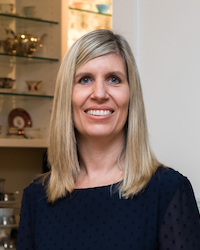
“We are physically located only in Vancouver. Our product is high quality. I think our packaging is beautiful. We’re unique, so clients like to feel they can get a bit of us at home.”
6. Offer Value

"If people don't see value for money, if they think they are being fooled, then you are done. People are so alert. They have had a chance to travel, they know what is good and what is good value. They don't need you. You need their market."
7. Prioritize Mobile Platforms

"I've been doing a lot of research (in Asia) in a couple of categories. It's amazing how much technology is being driven through mobile phones. The world is being seen – your brand is being seen – through a mobile device. That is taking over from computers and other web channels. Your whole brand experience through the telephone is critical."
Market Research +
1. Test to See Whether Your Product Fits Country Tastes

"Try your product to see how different Asian markets react. Are they willing to spend their money on it? To me, one of the best options is to get in contact with Canadian people installed locally in Asia, through organizations like the chamber of commerce, the Canadian Consulate, or the Thai-Canadian Association. You can ask for their help in organizing focus groups to meet with locals and get their reactions to your product."
"Another option is to participate in some trade exhibitions in Asia and listen to visitors' comments."

“We are a Vancouver-based company with a traditional British feeling that Asian clients have told us appeals to them. Our clients there particularly like our black teas. They buy a lot of it.”

"There is a lot of interest from mainland China in art markets, in classical art as well. There is greater prosperity and money to spend."
2. Assess Your Product for Market Fit

"We see that different companies have different levels of social media adoption. They use it differently. Facebook has created Facebook Lite for India, because they needed a product (that uses) less bandwidth. There are a lot of 2G networks out there. Facebook is blocked in China. So, you have to figure out your product strategy."

“If you are selling products – clothes, supplements, food… – you have to adjust for the market.”

"Being a software business, anyone can find our website and notice our product. We had customers in Asian markets self-identifying and setting up on their own. It grew organically. We saw an opportunity to work in those areas."
3. Be Nimble

“The market is so big and moving so quickly. There will be new products. There are developers who will work inexpensively over a weekend. You might start in Singapore and end up in Vietnam because it’s a better fit.”
4. Get Boots on the Ground

“Don’t underestimate the idiosyncrasies between different markets. You can’t think of Asia as one place.”
“Mobile access seems to be super important to customers in Asia in our experience.”

“Do your market research. Figure out where you are going, why, and how to meet the market demand. Asia is really big; you have to narrow the field. Chances are really good that there is a competitive solution you might not know about until you investigate that market. And it could be backed by the government!”
“If you’re not in the market, you’re not in the market. It’s hard to understand what’s going on in Asia from afar. When you’re actually on the Singapore subway system – MRT – you can see the pervasive use of mobile phones. Mobile phones are the personal computer for a huge majority of the population. There are apps here that are so multi-purpose. You can pay bills, book a restaurant, schedule your haircut. I don’t need to open my laptop.”
“There really is no alternative for being there. You probably can’t do what you’re trying to do from afar.”

“Visit – even study – with high performers in the Asian market. Visit factories in China. You need practical experiences in the country.”
Building Transnational Networks +
1. Start Building Asia Pacific Connections at Home in Canada

"We have relevant business associations here in Canada that you can join. You can talk to the people you meet there about connections you can approach in different countries in Asia."

"We have lots of clients in our neighbourhood moving back and forth between here and Asia. They are wonderful, loyal clients who are happy to spread the word about Secret Garden tea."

"Our contact asked us if it would be feasible to bring clients for a tour of our studio when he brings people over from China, as they go on tours of the West Coast."
2. Start Positioning Your Company in Your Target Asia Pacific Countries

"Look for key industry events or conferences and make yourself present – through sponsorship, advertising, social reporting, blogging, and physically being there in booths or presenting. How do you make yourself relevant, current, and visible at these key events, particularly for business to business?"
3. Tap into Local Networks

"We got introduced to customers in Hong Kong, Taiwan, and Shanghai by working with American firms that do business there. They introduced us to some Asian clients. When we held our Clio Cloud Conference in Chicago, some of these clients travelled from Shanghai to meet us and they decided to go with our product. We also went to a major event two years ago in Tokyo – the International Bar Association Annual Conference. It attracted a big proportion of the legal community."
"We have started to partner with law schools in Asia. Through our Academic Access program, our product is free for lawyers while they are in school. Getting them early has led to huge opportunities for us."

"The entrepreneur market is a global market. Find people who are in the same market as you and set up a call. You'll get instant insights and they might offer to meet when you visit. There is no excuse, in this day and age, to not have 10 really interesting conversations with people who live in Asia before you book a flight."
4. Cultivate Meaningful Relationships

"There are a lot of markets in Asia where you need strong relationships beyond meeting the market need."

"Find trusted resources who can let you know if you are doing business or making friends with the right people. When I enrolled in the Executive MBA program at Jiao Tong University [Shanghai], I made friends with the local people. Now, I have many friends from there. It's very helpful."
5. Find an Asia Pacific Partner Who Adds Value

"If you consider China is such a vast and big country, there is room for almost everyone. But doing business in China is not easy. You have to find the right partner."

"Our wholesale partner has been helping us with shipping and brokerage in Asia. They help us to get (our products) to [Asian markets]."
6. Look for Pacific Rim Advantages

"There are some natural connections business-wise, where it is easier to export from Canada to Asia."

“Vancouver is close. We have a good partnership with countries in Asia.”
Culture +
1. Know the Intermediaries

"My advice is, especially if you come from a western background: find someone you trust who comes and acts as an interpreter, who knows all of the cultural nuances and how business in the country works. If little bumps come up, they get smoothed out. The specifics of doing business are not like going on holiday. Tie things down. You trust your middle person and they trust you."
2. Develop an Active Understanding of Cross-cultural Communication Differences

"A 'yes' in Canada may not mean the same thing as a 'yes' in China or Japan."
3. Adapt to Cultural Differences

"You do have to take into consideration the cultural differences between Asia and Canada, and the cultural differences within Asia. That's super important. When I was training in Asia, I would change my way of training or presenting if I was in Korea, Vietnam, or Thailand. The behavioural expectations and questions were different. You have to be super flexible and super adaptable to each new country."

"Japan is a fantastic market. We find that the Japanese place a strong value on service and support. But, once they are invested in your brand, they remain quite loyal. You have to make that investment to get to the point where you are trusted. In India, they will often want you to come into their office to demo the product, whether it's for 50 or 50,000 people."
4. Consider the Importance of “Face”

"In the past, I was dealing with a business partner and, in a matter of a few hours, our discussions went from a top priority and making detailed business plans to them not even considering it. I think that at one point he realized he said too much and that he made himself look weak with a story he told me, so the deal was off. It can be three steps forward, two steps back."
5. Show Humility

"You have to be very humble. You are a guest in their country."
6. Be Prepared to Work Differently

"Laura did a watercolour design for the client, which went through the interpreter to the client. She also sent a photo of the 'cartoon' – the working drawing for us to be able to do the finer details of the window. We never actually met the client. The actual design of the window, everything was done through email. It felt very different when we first started, but it worked well."
"We are doing a job for Chinese clients where they have asked us to incorporate elements – plants, flowers, fruit, animals – that relate to prosperity, luck, and the family name."
7. Develop a Clear Language Strategy

"Sometimes it's easier to initially test products in Asian markets where lots of people speak English, such as Singapore and Hong Kong."

"It depends on what you want to do in the market. We have people who speak several languages in our office. Our product is translated into 26 languages."
8. Don’t Take for Granted That Your Asia Pacific Connections Know Canadian Customs or Business Practices

"The cultural differences work both ways."
Branding +
1. Step Back and Think About Your Brand Before Jumping into Marketing Plans

"The static version of a brand is usually a visual identity – an elevator pitch that is often found in the 'About Us' section of a website. The newer and more relevant definition is the real-time experience that consumers will have with your company through the internet, through the digital assets that the company is making itself known through – whether it's your website, social media, whether it's searching and finding websites in social pages or even through LinkedIn or business-to-business networking platforms."
"Think also about other points of engagement, such as an online shopping environment. There is a real focus on the here and now, the visceral, what you are seeing in front of your eyes. You need to have a strong understanding of your brand before you start thinking about how it will play in Asia."
"Build face-to-face relationships with people in your industry – for example, broker groups if you are in the development industry or super salespeople for your product. Whether it's technology, real estate, or produce, face-to-face communication and networking is branding."
"China is way ahead of the US in the focus on environmental issues, despite their carbon emissions. They are dealing with the whole problem very seriously. You have to think about your brand within the context of sustainability and environmental considerations."
2. Think About What a “Made in Canada” Brand Means in Asia

"In terms of education and real estate, there is a whole association with a new lifestyle and interesting opportunities for families to either permanently live or temporarily travel in Canada. People, whether they are in Europe or Asia, also associate Canada with nature and tremendous natural resources. One of those pristine, less polluted, less populated, massive green territories. And for those who live closer to the equator, Canada is winter."
"For consumables – whether we're talking about produce, beef, water, or beer – Canada is fresh, natural, wholesome qualities."

"Canada has a trusted, quality brand and people are welcoming and engaging with us."

"If the product is attached to your country, it's a good idea if people have had a chance to experience that product in your country."
"When I think about my business in China, it is very clear to my mind that the flour would come from Canada and the eggs would be tracked consciously."

"We hear from clients that it's desirable knowing that our teas are from Canada and Vancouver."
3. But Don’t Expect to Coast on Your Canadian Brand

"The Chinese know that Canada is beautiful, nice, trustworthy. Canada is fine, but we don't need to roar about this. If you are bringing in products from other countries, you have to be sensitive to how those other countries are viewed in China right now."
"Some Canadian entrepreneurs are understandably proud of their products or their company. They take it for granted that people in China will know their brand and their products because they are popular in Canada or North America. Unfortunately, it's often not true. You need to develop a global view."
Intellectual Property (IP) +
1. Craft a Clear IP Strategy

"Building and monitoring your IP strategy is just as important as business planning, because it really is going to set the tone for your company."
"An IP strategy is a series of decisions and methods designed to maximize the contribution of intellectual property to achieving business objectives. It involves:
• Taking inventory of intangible assets and IP;
• Knowing the IP and IP strategy of competitors;
• Reflecting on the best way to maximize the positive impacts of IP on revenues, competitiveness, and reputation; and
• Communicating with employees, business partners, and investors."
"Possible IP strategies include:
• Not filing any IP protection – putting your product into the public domain, focusing on first-moved advantage, building brand loyalty and your customer base;
• Protecting technical aspects – seeking patent protection on technical aspects is key to product base and your ability to shut competitors out;
• Focusing on brand value – filing for trademark and/or copyright, building value through brand recognition;
• Filing protection for offensive purposes – aggressively enforcing rights against competitors; and
• Filing protection for defensive purposes – relying on rights should competitors infringe."
"If you are planning to expand to Asia, timing is important. It's not like you can file one day and three months later you have a patent or trademark in hand. There is lag time. You have to research what type of protection you need to try and give yourself the best opportunity to succeed in the international marketplace."
"It's important very early on to start thinking about IP and how it overlays with the goals of the company. Where do you want to be a year from now? Two years? Is a patent important or not? Is part of the plan for your company to be licensing its IP to other countries? If so, IP protection definitely makes sense because otherwise you won't have any assets to license."
"If you need to raise financing, IP considerations are key. Funders want to see that you have protection in place, because they view it as securing your investment."
2. Research Specific IP Issues for the Asia Pacific Country You are Targeting

"Looking at the rules for the various countries is important. You want to make sure that you have the brand protection in place before launching in a particular country."
3. Tap Into IP Support Offered in Asia Pacific Countries

"There are some options with registering formal IP rights with Chinese customs. If things are found that infringe on those rights, they can be seized at the border."
"I've worked with companies and their whole business is working with other companies to enforce IP rights and protect their intellectual property in China. If you have something to trademark or a product you are selling, they monitor a lot of different shopping portals. If they find things that are infringing, they will send cease-and-desist letters."
4. Research Your Competitors’ IP

"Conduct competitive intelligence searches of IP databases to see what IP rights your competitors are filing, and in which countries."
"Examine your competitors' products or services to see if they make use of your IP rights."
5. Be Realistic About IP Protection Costs

"If filing a patent is important for you, in Canada anticipate $30,000+ to go from application to issuance. The U.S. costs are similar but in U.S. dollars. It depends on how complex the technology is. If it's very complex, it will be a lot more as it will take more time to draft and argue back and forth with the examiner. It will also probably take three-to-five years. If you are going to be going into multiple countries, you will probably use a PCT application – Patent Cooperation Treaty. Then you have to pick the countries you want that in. Quite quickly, you can spend a lot of money on patent filings and examination costs."
6. Explore the Different Forms of IP and What is Most Relevant for Your Particular Business Model

"There are multiple forms of intellectual property to consider: patents, copyright, trademark, industrial design, trade secrets, integrated circuit topography, plant breeder rights. What is right for your company? Trademarks, for instance, are particularly important for the logos for the brand and the company name."
Click here to learn more about these different types of IP.
7. Think About Personally Enforcing IP Infractions

"Even if you do have IP protection, what's your ability to enforce, especially at a distance? It's hard enough to do it in your own country. If you're going to do it in Asia Pacific countries, you are going to want someone on the ground. It's an extra cost."
"By researching your competitors in Asia, you can see how crowded the area is. You can ask the question: 'Is this just a bad idea or is this fantastic and we are the first person in the space?'"
8. Look for IP Efficiencies

"The nice thing about the upcoming changes to the Trade-marks Act is that instead of having to go into each separate country to file the trademark application, you can file one application and designate numerous countries."
9. Look for Unexpected Cross-cultural Sinkholes

"There were a couple of famous examples of trademark infringement cases in China involving a phonetic spelling of a logo or mark versus the actual English spelling. There are a couple of famous cases with Air Jordan and New Balance."
10. Know What You Can Communicate When

“If the brilliance of your company is the patent, you can’t make the information public before filing your patent application. Once you disclose that confidential information before filing your patent, you lose a lot of your international rights.”
“A lot of these relationships are based on trust, and you can’t shut down and say ‘I can’t talk about my idea.’ That won’t get you very far with most companies. But I always tell entrepreneurs to trust their guts with what they say, when, and to whom. Quite often you can sense when something is a little fishy or doesn’t feel right. Even with a CDA [confidential disclosure agreement] in place, I would suggest to entrepreneurs that you use some discretion about what you will present.”
11. Develop a Non-specific Way to Talk About Your Product

"Quite often, entrepreneurs can provide blinded data and talk about their inventions in non-specific ways. You can talk about the benefits of the technology and how it solves a pain point. If you can have a non-confidential discussion, you can whet the appetite to get into the next phase of signing a confidentiality agreement and having more in-depth discussions."
12. Understand Why Some Companies Won’t Sign Confidentiality Agreements

"Many companies won't sign confidentiality agreements right up front. This is primarily so they don't contaminate their own IP. They might be developing something similar in-house and pass on the opportunity for that reason. Later, that person they met with might think they stole their idea."
13. Recognize How Easy it is for People to Copy Your Work

“IP is difficult when you look at the creative fields, especially with how global things are. With the digital age and the ability to exchange images through Instagram, Pinterest, Twitter, and umpteen other platforms – it takes milliseconds – it’s pretty easy for people to be looking and finding images that they like and to use them or to be influenced consciously or unconsciously. Designers don’t always know how rights should be accredited and used. As far as being able to rely on protection, you are probably going to come back to trademark and copyright law.”

“Many high-tech companies that enter China are quickly followed by competitors that copy the new-to-enter business models.”
14. Hire Carefully and Watch the Market If You are Going to Bring in Others to Build Your Designs

"A friend of mine had a line of production. One day, he realized that the manager of his factory had another factory doing exactly the same thing as his high-price factory. He was copying all of the designs, sending it to his own factory, and selling it at a cheaper price."

“I have met Canadian business people who are surprised to learn that someone has already registered their trademark in China. You must move quickly and find the right person for trademark registration.”
15. Consider Whether You Can Afford to Follow Up with Someone Who Steals Your IP

"For a micro-artist business, that's going to be a problem. In the creative fields, there are more bad actors because, if someone takes an image and uses it, artists often won't have the money to hire a lawyer, let alone to go through litigation against a third party."
16. Look into Licensing

"If someone wants to use your image or photo, you can have a quick licence created so someone can download it and pay you some funds for use if they accept the terms."
Logistics +
1. Don’t Underestimate Logistical Challenges

"Research carefully before choosing which bank you will deal with. Does your bank allow you to hold multiple currencies? Can you, for instance, have an account with both Chinese yuan and US dollars? If you take out a loan, what is the payment schedule? In what currency must you pay and can you do so from overseas?"

"In some (cities), like Manila, you can sit in traffic for 2.5 hours on the way to a meeting. It's not like driving from Richmond to Vancouver. If you're crossing a border, there may be different languages and regulations."

"A 14- to 15-hour time difference can be interesting to work around. Will you be able to offer the same round-the-clock service you offer in North America?"
2. Consider Shipping Costs From the Beginning

"We find that shipping items through customs can be more challenging and expensive than staying in North America. It's trying to find the balance of what the client is willing to pay, doing the math. Sometimes it's harder to be small, because you don't get a lot of price breaks. We use a broker to get it through. Every time we ship, we are learning more about the market."

"It took a while for us to find a shipping arrangement where the client was happy with the costs. Our interpreter found someone who was based in China who did lots of import and export. Now, we know of a firm based in China that can do the shipping. It's such a learning process."
3. Carefully Protect Your Products for Shipping

"The 'fragile' sticker doesn't mean that people will treat it like it's fragile. It doesn't really matter how many 'fragile' stickers you put on it. You have to assume that they will be rough with it."
"Sometimes it's hard to make sure it arrives intact. We have had our tins dented by the time they get to the client. We've tweaked and changed our packaging to make it get there safer. It's the sizes of the boxes we use, the bubble-wrapping, how we're insulating our tins."

"The shipping is quite complex. We crated it up with really thick plywood and high-density impact foam. It could have withstood a nuclear strike. A large frame holds the window on its end, not on its side. Nothing could be sat on top of it. So, if it was transported with a forklift, it wouldn't fall over and couldn't be easily damaged."
4. Co-ordinate Early with Others Who Might be Installing Your Work

"They had joiners in China who were going to build the frames for our door windows. So, instead of just sending the window and saying 'thank you very much,' we had some frames made locally. We then fitted the windows into the frames with the saddle bars. That actually gave the joiners in China a visual aid to see exactly what we were talking about. They would take our frames off, but it would show them how the windows would fit for structural support."
Pricing +
1. Evaluate Your Pricing Models

"There are country differences in willingness to pay. The ones we started with, we see per-capita GDP as being similar. Or larger firms in countries where GDP is lower but there is a willingness to spend. You have to find the right price points."

"Sometimes you will need different pricing strategies in different Asian markets. Or, you may roll out products or features at different times because there are nuances in what's happening in that market."
2. Be Up-front with Your Pricing

"This is business. People are looking to understand the specifics of what you are doing, the costs. Everyone, including the client, needs to understand what they are paying for. This builds a bond of trust."
Staffing +
1. Value Staffing Diversity

"Singapore is a very international market. There is a lot of diversity in our workforce. We hire locals along with expats from Malaysia, Britain, Canada. The government wants to see a good balance between locals and non-locals."
2. Hire for International Expertise

"We have more than 1,000 people globally at Hootsuite. We've had to build our expertise in international business dynamics – things like transferring people, business protocol, the pace of business."
3. Incorporate Locals Quickly

"When I hired people from China, I wanted them to feel that they were part of the company. If your staff is only led by overseas people, you don't have that. If you have local people whom you train, promote, and who can eventually help you run your business, that will be easier."
4. Build Carefully Vetted Partnerships

"In Singapore, we worked with a local, dedicated, on-the-ground partner. We call them 'Clio Certified Consultants.' They provide local support and have assisted us in getting approved for a government grant program that pays for up to 70 percent of the cost of Clio for new law firms."

"I find that the notary public system in China is strengthening. When I go to the notary public's office, they have cameras set up. If I'm going to grant you power of attorney, both of us have to take photos. They record everything."
5. Bring Trusted Experts From Home

"If you are expanding into Asia, bring the person who has the technology and knowledge, with the idea that after X months or years, you can find someone locally to promote and give the job to. My head baker and head pastry chef will go to each country."
Corporate Social Responsibility +
1. Be Clear About Your Values

"Ask yourself: What do you stand for? And what are you willing to stand up for? What are your business values? Answering these questions will enable you to seek out and find partners who align with your principles."
2. Build Corporate Social Responsibility into Your Strategic Planning

"Over the past several years, I've seen a heightened commitment among many companies to corporate social responsibility, building sustainability directly into strategic and annual plans. It's becoming the new norm on how to do business. It's also becoming a much more complex field, requiring an in-depth understanding of labour, health and safety, and international development issues. As global citizens, we have the responsibility to do things better – to respect the people who make our products and the environment they are in."
"Advantages of acting responsibly as a company can include:
• Better relationships with factory partners, moving away from transactional to long-term, equal partnerships;
• Increasing factory worker empowerment, satisfaction, and retention;
• Higher standards of quality and better products, with the confidence that they were produced in a way that respects the people who made them; and
• Confidence when educating consumers of where your products come from, who made them, and the conditions under which they were made. More and more consumers are pushing brands for greater transparency into their supply chain. Brands that can provide this transparency will be seen as leaders, gaining consumer trust in the process."
3. Recognize How Important Social Causes are to Millennials

"It's this whole notion of buying products or choosing a career with clear social or cause-related benefits. Millennials are redefining the marketplace as they acquire wealth and get more spending power. You see this in a strong way in Asian countries."
4. Assign Someone Specific in Your Team to Oversee Social Compliance Issues, Even if You are Small

"Working closely with the director of sourcing, the social compliance team strives to ensures that all finished goods suppliers meet and/or exceed the MEC Supplier Code of Conduct. Our goal is to ensure that the clothing and products we produce or source respect the environment and the people who make them. Initiated this year, we are expanding our scope of work to our material suppliers."
5. Look Into Fair Trade Certified™ Programs

"A Fair Trade Certified™ product must meet standards that ensure garment workers have safe working conditions, a voice in the workplace, higher earnings, and equal treatment for women. Although these rights may seem basic, they are not always guaranteed in many countries where clothing is produced. This is one of the reasons we partner with organizations such as Fair Trade USA, which helps to support our efforts to improve workers' lives within our own supply chain."
6. Connect with Relevant Industry Associations

"MEC partners with industry working groups and organizations that share our passion for creating meaningful change and impact within our industry. In my role at MEC, I work closely with the Fair Labor Association, the Social and Labor Convergence Project, Fair Trade USA, the Outdoor Industry Association, and many like-minded brands on industry tools, sharing learnings and best practices."
7. Audit Wisely

"MEC sources its private-label products from factories in Cambodia, Canada, China, El Salvador, India, Taiwan, Thailand, the U.S., Vietnam, South Korea, Turkey, and the Philippines. Our audit program is at the core of our social compliance program. We conduct a pre-sourcing audit with all factory partners prior to initiating business. Facilities are then audited on a 6- to 18-month basis based on the previous audit results – auditing more frequently should there be high-priority items such as poor chemical management, excessive working hours, etc."
"Alongside our audit program, we also support our factory partners through capacity-building projects and training, as determined through auditing and country risk profiles to better understand human rights violations and where MEC can add value in bringing greater awareness or potential solutions."
"Working on a country-by-country basis, we work with several programs to strengthen our social compliance program, aiming to provide a more holistic program and support our factory partners. Primarily we work with Fair Trade USA and the International Labour Organization's Better Work program in Vietnam and Better Factories program in Cambodia. We also work with non-government organizations and working groups for trainings, tackling issues such as forced labour and human trafficking in Taiwan; childcare facilities in Central America; fire safety, grievance mechanisms, and social insurance benefits in China; and more."
"Many factories within the apparel industry struggle with what we call "audit fatigue" – i.e., a high number of audits. Each brand has its own code of conduct, and its own audit standard. This has led to a proliferation of audits, which cost facilities time and resources on auditing, rather than using their resources to improve social and labour conditions. Audits have, in general, been a good method to gain benchmarks. But for a brand starting out in the realm of social responsibility, I would strongly encourage as much industry collaboration as possible, allowing business partners to measure continuous improvement and increase opportunities for transparency."
8. Set Up a Responsibly Sourced Supply Chain in Which the Workers are Paid a Fair Wage

"Visit the facilities you work with; meet with management and employees to understand who they are and how they do business. Then determine if your respective business values align."
"Avoid the lowest cost. It costs money to do business responsibly. The brand and the facility both have the responsibility to ensure workers benefit from fair wages and safe working conditions."
"Ask if the facility has been through social compliance audits or capacity-building programs or programs like Fair Trade USA. In other words, do you intend to educate factory management or learn from the best practices the facility has in place?"
9. Work with Other Companies Who Take Corporate Social Responsibility Seriously

"Collaborate! You and your brand cannot do this alone. As an industry, we need to work together and there's lots of experience out there. You don't need to reinvent the wheel."
Working with Government +
1. Be Well Versed in Government Regulations

"There is a big difference between Canadian and Chinese government regulations. China's regulations and policies change quickly. It's important to work with someone who is up on the current government policies."

"One thing for us is being mindful of data storage location. We are dealing with such confidential information and government regulations differ. And we are sometimes dealing across jurisdictions. We have to have conversations with local regulating authorities."
2. Consult Government and Industry Resources

"Use economic development authorities to introduce you to new connections and help you learn about new markets in Asia. What assistance is available for early connections into the market? For example: Export Development Canada and the Singapore Economic Development Board."

"Government organizations can help you explore countries and build relationships. We work with the Canadian High Commission and Trade Commission."

"I would rely heavily on the Canadian Trade Commissioners. They have boots on the ground in pretty much every country. They have programs where they take a company to a new territory for meetings – to introduce the company and its products and services. There are some for China, for instance. They are an excellent contact."
Eyes on Asia: Ideas into Action
We talked to some promising young Canadian entrepreneurs in the tech and creative industries who are plotting their growth into Asia to see why they think their businesses will fare well in Asian markets and what first steps they are taking to get there.
These active entrepreneurs are busy building their businesses in North America. At the same time, they are cultivating their connections in Asia, knowing they would like to take their products across the Pacific in the short or long term.
Tech
Univrs +
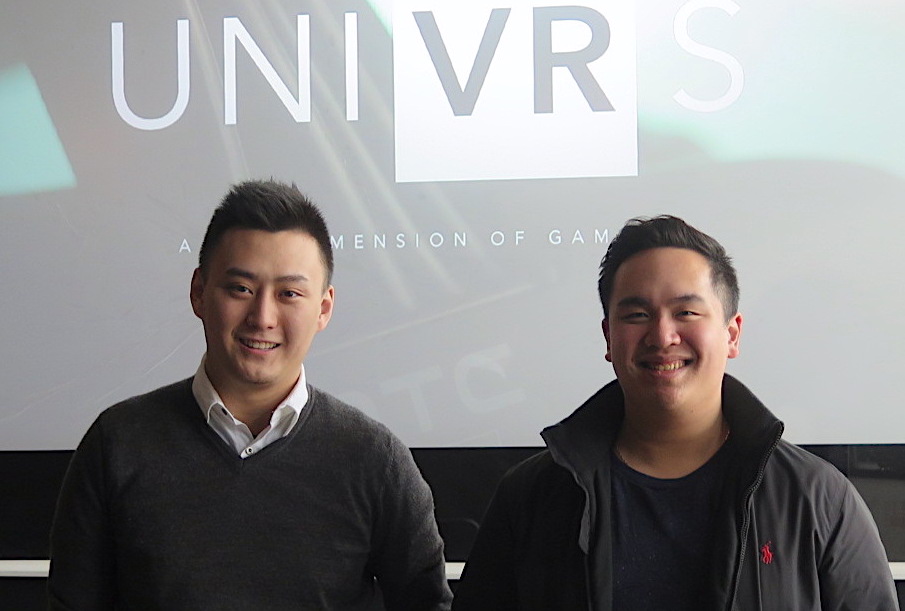
UNIVRS founders Charlie Shi and Alex Chua
How would you like to spend the afternoon visiting Florence and New York, drawing a cupid's heart that can dangle in the air, and walking out onto a 50-storey plank with no guardrails to keep you safe? Visit UNIVRS – "Metro Vancouver's first Virtual Reality Lounge" – and you can have these adventures without violating building safety codes or the time-space continuum.
UNIVRS is the brainchild of Alex Chua and Charlie Shi, 2016 graduates from the Sauder School of Business at the University of British Columbia. With Shi's background in e-gaming and tech, and Chua's in audiovisuals and content creation, virtual reality (VR) was a good fit.
"We wanted to bridge the gap between high-tech entertainment and everyday consumers," says Shi. "With VR, you can try things that you normally would not be able to try in the real world – travel the world, fight with light sabres, swim with dolphins, put your head in a guillotine."
UNIVRS has already attracted much media attention and a broad range of players: families, parties, competitors seeking the highest score, and companies looking for a fun retreat.
"We also see people in the elder generations who really like this because they can do things they can't do at their current age, or things they never got to do in life," adds Chua. "One woman called about her father-in-law who had cancer and recently went off treatment. He had always wanted to go to the Galapagos Islands and this was an opportunity to do so."
In the short term, Chua and Shi are planning to open another UNIVRS location in Metro Vancouver. They are also looking for opportunities to build out into Asia. "We are looking at the ROI of expanding into hardware distribution. With that, we are not as limited by physical location," says Shi.
Chua and Shi have strong personal ties to Asia. Shi moved to Vancouver from Shenzhen, China, when he was eight years old. Chua was born in Edmonton, then moved to Malaysia until 2012. "Our private equity investor has lots of connections in Asia – partnerships and portfolios," says Shi. "We are in talks with suppliers in Asia who produce and manufacture VR machines – exercise bikes, arcade stations."
The UNIVRS founders would also consider the possibility of bricks-and-mortar locations overseas. "There are lots of gamers in Southeast Asia. I see lots of opportunities for interesting, new things in Malaysia," Chua notes. But it will be important, they realize, to get a deeper understanding of Asia Pacific markets, trends, regulations, logistics, and political environment. "We can't assume that people in an Asian country will act the same way as here," Shi adds.
Shi and Chua also look to Asia for ideas that might work back home in Canada. "In Malaysia," Chua says, "they opened up a 5,600-square-foot hub across from this college – a hangout for students. It was really decked out. There is nothing like that here."
It will be exciting to watch these two up-and-coming entrepreneurs as they take UNIVRS – and some of the other venture ideas they have brewing – into the future. "We work a lot of hours," Shi admits, "but we're having fun."
Ping Solutions +
 Ping founders Michael Worthington and Layne Lafrance
Ping founders Michael Worthington and Layne Lafrance
Layne Lafrance and Michael Worthington were so keen to be entrepreneurs, they started Ping while they were still at UBC. "Entrepreneurship gives you a broad skill set that allows you to adapt to change," says Lafrance, of this former startup. "That way, when AI and the accountants take over, I'll still be working! I don't want to be automated."
Since graduating from UBC in 2017 – Lafrance in finance and entrepreneurship, Worthington in marketing – they are diving into Ping full-force.
"We're a software development company," Lafrance explains. "Half of our business model is using the skills we have to fund experiments that we find fun – Google calls them moon shots. They are extravagant odd projects that we try to test and validate 'lean startup' style. We fund our experiments with the money we make in the other half of the business, consulting."
This was not their first venture. In 2015, Lafrance and Worthington were part of The Next Big Thing, "a national charitable organization that empowers youth with the tools and skills they need to succeed as entrepreneurs."
In TNBT – started by Hootsuite CEO Ryan Holmes and serial entrepreneur Meredith Powell – Lafrance and Worthington were working on Iconik, a mobile app that allowed for in-text content sharing for businesses and their customers. "TNBT was phenomenal," Lafrance enthuses. "There was a great mix of people at different stages, from ideation to execution. It was a powerful place for character development."
From those early days, Lafrance and Worthington have had their eyes on Asia. "The sheer volume of people...." They are, in fact, already active across the Pacific. Thanks to connections Lafrance and Worthington made in early fundraising discussions for Iconik, they have been doing sales consulting for a company from India that is looking to expand to North America.
Lafrance and Worthington also look to Asia as a rich source of learning. "Asia has broadly mastered process. If you go to a bubble tea place, everything is so measured. They have it down. We can lack that," says Lafrance. "I'm also really interested in blockchain, which has a really strong presence in Singapore."
While Worthington and a pool of freelancers continue with the consulting arm of Ping, Lafrance will head to Asia for the summer to work, learn, and explore future opportunities for the company. "Michael and I really want to understand Asian consumers.
"I applied to something called the Cansbridge Fellowship," Lafrance explains. "The founders, William and Diana Yu, want to see more professional connections between Canada and Asia. The fellowship allows students to go work for a couple of months, experience the culture and work life."
With Cansbridge, the Yus' goal is "connecting and fostering entrepreneurs of tomorrow." Lafrance will be in Singapore and Hong Kong working with Heartisans, a startup built around a wearable blood pressure monitor watch. "It will be a grand adventure. I will be working in an area called Science Park, sort of like the Silicon Valley of Hong Kong," said Lafrance.
By the time Lafrance returns to Vancouver, Worthington will have gathered more insights from his consulting with India and she from her immersive work experience in Singapore and Hong Kong. "Michael and I want to look for opportunities to grow in the Asian market and build something sustainable," she says.
With their endeavours in Asia, these two young entrepreneurs are also looking to do good. "In developing areas," Lafrance adds, "there is also the chance to find solutions for problems that will fundamentally change the way people live their lives."
Creative
Anne Carson Design +

Designer/proprietor Anne Carson
Creating her one-of-a-kind jewelry pieces on a wooden houseboat moored at Granville Island, designer Anne Carson could not be more Vancouver in her approach. "My business is hand-making unique jewelry," Carson says. "With real pearls, real silver, real gems for real women."
For more than a decade, Carson has been selling her wares to loyal clients across North America. "I source my materials from all over the world. I go to Hong Kong for pearls, particularly the baroque pearls. They come in beautiful, natural colours like pinks and greys and creams. There just isn't that selection elsewhere."
Once Carson has chosen her pearls at the Hong Kong trade shows, she has them shipped back home. "There is some paperwork," Carson explains, "but it is fairly straightforward. You pay GST, but when you bring pearls into this country and they are strung for transport, they are duty-free. It's different if they are already incorporated into jewelry."
Carson is cautious when she thinks about expanding, because it is important to her that she makes the pieces herself. "Years ago, I looked at the possibility of ramping up – doing more of the design and letting other people make the jewelry. But for me, because each of the pearls and stones are chosen on an individual basis to go into specific pieces, I don't want to turn that over to someone else. I always want to maintain the control. I will always be the hands-on person."
 But Carson has been approached and is excited about exporting to Asia Pacific markets. "I have had interest from companies in Asia who would like to sell my product there," Carson explains. "It's in the very preliminary stages; they discovered me online. What I'm considering is having a few of my products sold in very high-end retail stores. I think that Vancouver has a very strong connection to Asia – our lifestyle and our artistic sensibility is appreciated by a lot of customers in Asia."
But Carson has been approached and is excited about exporting to Asia Pacific markets. "I have had interest from companies in Asia who would like to sell my product there," Carson explains. "It's in the very preliminary stages; they discovered me online. What I'm considering is having a few of my products sold in very high-end retail stores. I think that Vancouver has a very strong connection to Asia – our lifestyle and our artistic sensibility is appreciated by a lot of customers in Asia."
Right now, Carson is considering logistics and narrowing her Asia Pacific market focus. "Perhaps South Korea, Japan, maybe Taiwan," Carson says. She looks forward to learning more about these countries' business cultures and export-import processes. "Sourcing from Hong Kong has given me a taste of Asia," says Carson. "It doesn't feel quite so foreign anymore."
Ava Winery +
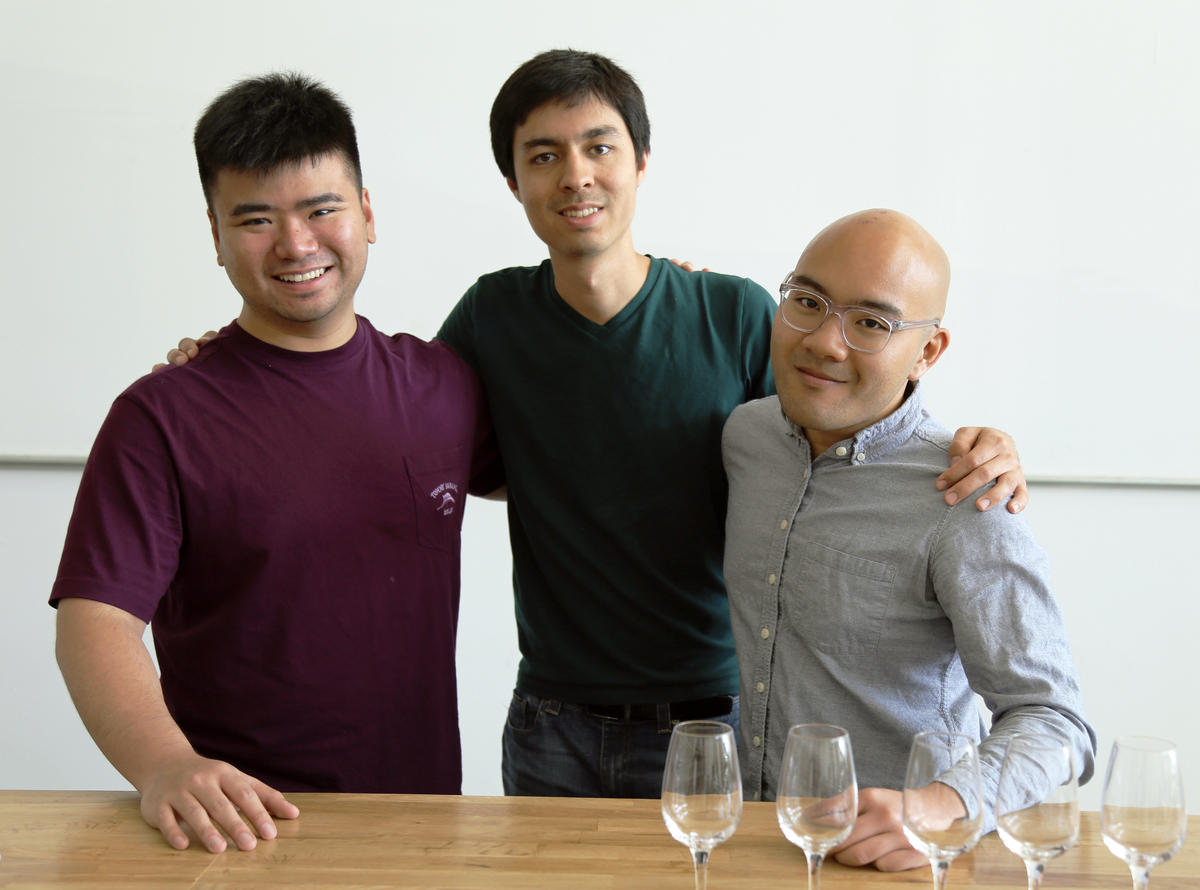
The Ava Winery team (from left) Mardonn Chua, Alec Lee, Joshua Decolongon
The coveted bottle of 1990s Cabernet has pride of place in the billionaire's collection – cosseted from harm, on hold for the most special of occasions. That bottle costs hundreds of thousands of dollars. Most of us won't be lucky enough to garner even one sip of this revered wine. But, what if we could?
That's the question that struck young Canadian entrepreneur Mardonn Chua in 2015, when he was visiting a Napa winery. "I saw this bottle on display – a 1973 Chateau Montelena," says Chua. "It won the Judgment of Paris in 1976. It was a big deal for this American wine to beat all of the European wines. I wondered if I would try it out, but I learned that the last one was sold for around US$10,000 a few years ago. There is only a handful left in the world."
"What a shame," thought Chua, a biotechnology graduate who had already started his first stem cell research venture while studying at the University of British Columbia. Then, Chua started thinking: Do we really need to grow grapes over stretches of land for all these years? What if we could recreate this Chateau Montelena and other fine wines, molecule by molecule, in the lab?
Though plenty of people thought Chua's idea was madness, Alec Lee did not. Lee had studied biotech with Chua at UBC before heading to Harvard to do his MBA. "We started working on it that weekend," says Chua.
"The first few prototypes were really, really terrible," Chua admits. "They were almost like white paste. We got a lot of values wrong the first time." Chua and Lee brought in Joshua Decolongon, a wine expert they had also met at UBC. "At one point, he was the youngest wine sommelier in North America," says Chua.
The trio kept working quietly and, a few months later, Ava Winery was launched. "We make wine without grapes or fermentation," says Chua. "We build wine from the ground up from each individual wine component."
"Just as words can be turned into stories, our team at Ava Winery identifies molecules responsible for tastes, smells, and colors, and combines them to create wine," the Ava Winery site tells us. "No grapes necessary."
"We believe the future of food is similar to Star Trek," Chua adds. "Wherever you are in the world, with a push of the button, you can have any food you like."
The young entrepreneurs relocated to San Francisco and started attracting investor and media interest. "We raised the seed round last summer from Horizons Ventures and Collaborative Fund," Chua explains. Horizons is international; its main office is in Hong Kong. They flew out."
People are excited about being able to try replicas of $10,000 wines without having to hunt down rare bottles and shell out great piles of cash. As Lee told The Guardian, "this isn't a counterfeit business, the pitch is not to trick consumers they're buying the real thing, the pitch is to have the same experience at a lower price."
Ava Winery is quickly ramping up. Right now, it's focused on carefully crafting the line of products, but Asia Pacific markets are most definitely on the horizon. "Asia is a growing market for wine consumption," Chua explains. "We are not limited to a geographical location, so we can produce anywhere."
"It's interesting," Chua adds, "that in China, and Asia more broadly, some people consider it to be a really healthful product, especially red wine. There seems to be a prestige around wine. We've seen that people in China like the mix of luxury and health."
Chua knows that there will be challenges to be tackled in moving across the Pacific: different regulations – labelling, classification, distribution channels – different palates. But, once Ava Winery is established in North America, Chua is optimistic for this global growth.
"Horizons Ventures," Chua says, "has good relationships across Asia, which definitely helps us and makes introductions easier. Ultimately, the product will need to speak for itself."
Useful Links
If you would like further information on our Bridging the Gap topics and other areas of interest to Canadian entrepreneurs considering Asian markets, here are some useful links to online resources:
Intellectual Property +
Background information on patents
Background information on trademarks
Background information on copyrights
Background information on industrial design
US Patent and Trade Office
World Intellectual Property Organization
WIPO's global brand database
Google Patents
Export Assistance +
CanExport program
Canadian SME Gateway to China
Canada China Business Council
Canada's Business Development Bank (BDC)
Social Corporate Responsibility +
Women Entrepreneurship +
Forum for Women Entrepreneurs
The Women's Enterprise Centre
Young Women in Business
Minerva
Local Incubators and Accelerators +
UBC Small Business Accelerator Program
DIYGenius
Futurpreneur
Asia Pacific Foundation of Canada Resources +
Guidebook to Doing Business in Asia: A Resource for BC SMEs
Canada-Asia News Service
APEC-Canada Growing Business Partnership




